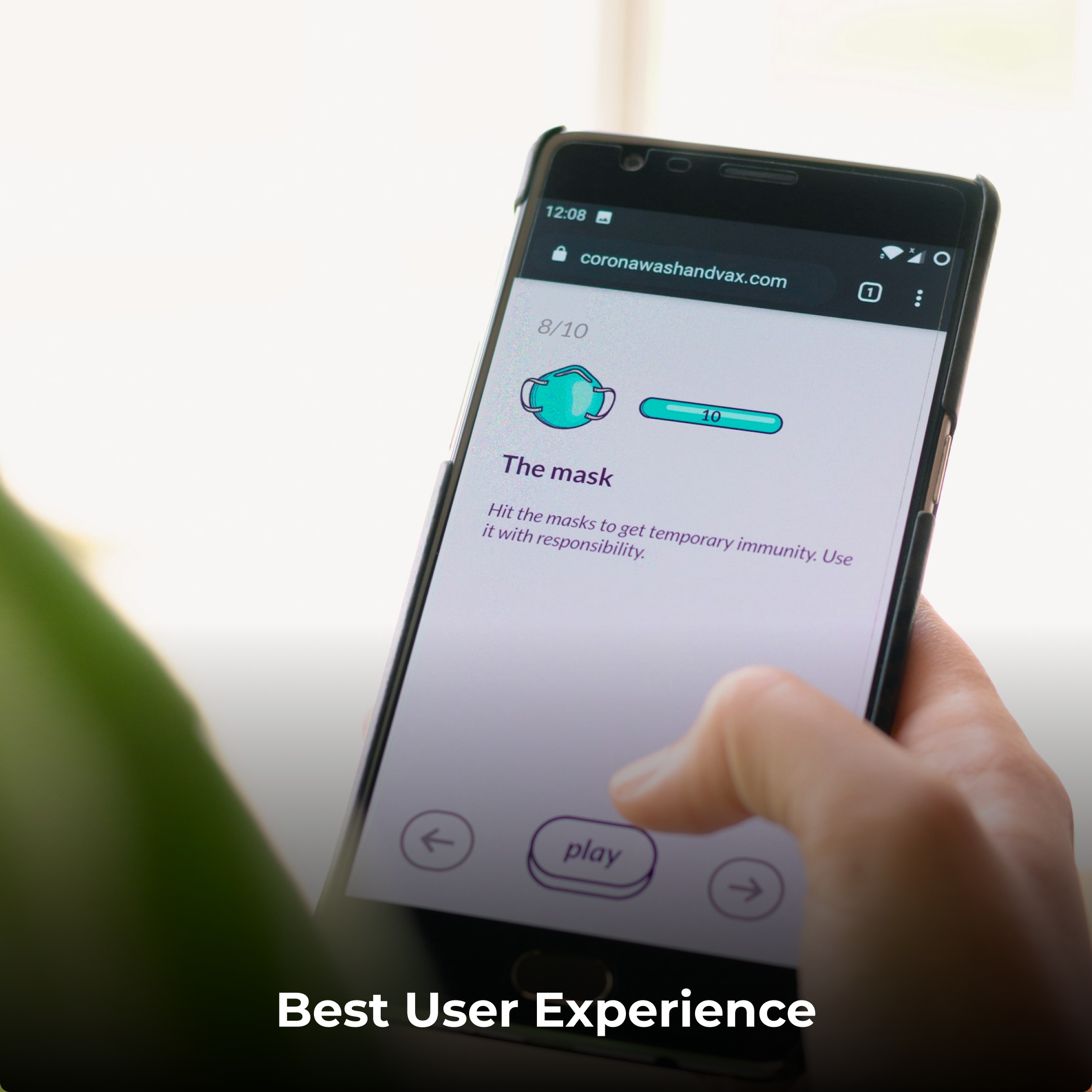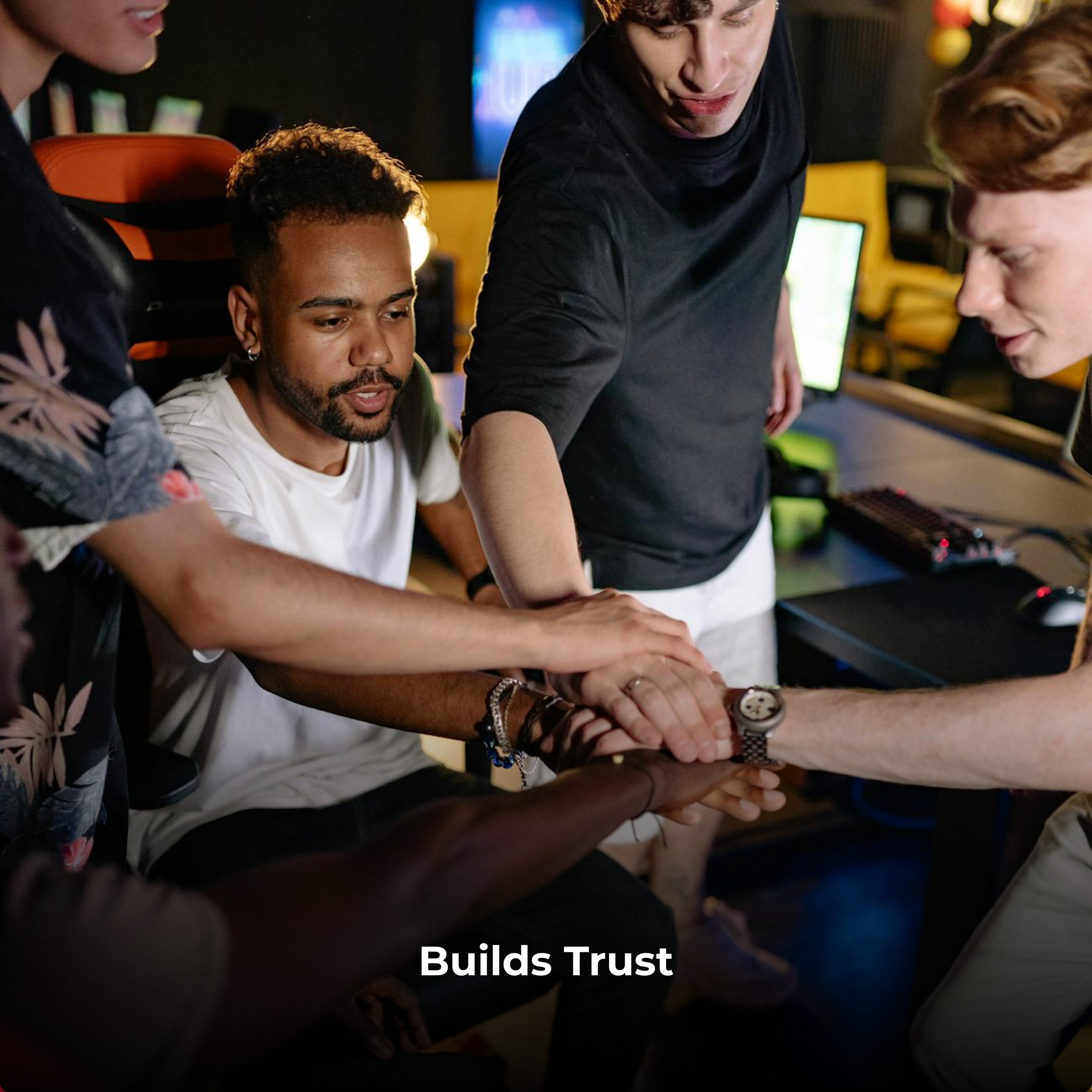


































AI - Driven Growth Solutions

Infidigit is a CMO’s most preferred partner
2.2B+
Organic Sessions
15M+
Leads Generated
100+
Case Studies
60+
Awards & Recognitions






































































KNOW ABOUT Education SEO
Optimizing a website to improve its visibility on search engines has become essential, leading to the emergence of Education SEO. This refers to enhancing a website’s presence on search engine result pages tailored explicitly for institutions and platforms. The significance of Education SEO cannot be emphasized enough as it acts as a catalyst in boosting presence, attracting students, and facilitating smooth information dissemination.
An executed SEO strategy for education websites involves keyword research, optimizing content, and making technical improvements. By targeting keywords, institutions can align their content with the queries of their target audience, resulting in rankings on search engine platforms. This visibility does not ensure increased website traffic. Also establishes the educational institution as a reliable source within its niche.
In essence, Education SEO goes beyond optimization practices by delving into the sector’s complexities. As prospective students increasingly rely on platforms for information, mastering the art of Education SEO becomes crucial for institutions striving to maintain competitiveness in the landscape. This guide will explore the intricacies of implementing SEO strategies for websites while providing practical insights and data-supported approaches that can propel institutions to become leaders in online education.
Here’s a collection of SEO tips designed to help your higher education website achieve higher rankings in search engine results.
Implementing these tips can help your institution improve its search rankings, attract more prospective students, and ultimately increase enrollment.
Strategies
An effective Education SEO strategy relies heavily on keyword research and strategic implementation. First, it is essential to identify terms, like “education SEO” and “SEO for education,” that resonate with your target audience. You can use tools like Google Keyword Planner to discover search queries and evaluate their search volumes. Once you have identified these keywords, seamlessly incorporate them into parts of your website’s content, including headings, meta descriptions, and body text.
By placing keywords throughout your content, you ensure that search engines recognize the relevance of your materials. This recognition will subsequently enhance your website’s ranking on search result pages. Aligning your content with the queries of students and educators will also make it easier for them to find your educational platform. In turn, this will attract a relevant audience to your platform.
In the following section, we will explore techniques for keyword research. Guide effectively integrating these techniques into your content for optimal SEO performance.
Creating compelling and relevant content is pivotal in the realm of Education SEO. Search engines, like Google, prioritize content by incorporating targeted keywords and providing users with genuine value. Educational institutions must focus on producing high-quality content that addresses the needs and queries of their audience. This includes crafting informative articles, guides, and blog posts that showcase expertise, answer common questions, and offer valuable insights.
Moreover, maintaining relevance in content is vital. Regularly update your educational materials to reflect industry changes, emerging trends, and advancements in the academic landscape. This signals to search engines that your content is current and reliable and ensures that your audience receives up-to-date and pertinent information.
In this section, we will explore strategies for creating content that resonates with your target audience, emphasizes educational expertise, and meets the evolving demands of search engine algorithms, ultimately enhancing your website’s visibility and credibility in the competitive education sector.
A successful education SEO campaign relies on an organized and user-friendly website structure. An intuitive navigation system enhances user experience and significantly affects how search engines index and rank your educational site. Start by creating a hierarchy that accurately reflects your content’s sections and categories.
Optimize your website’s URL structure to be concise and representative of your content, helping search engines understand your pages better. Implementing breadcrumb navigation can also assist users in navigating your site’s hierarchy.
Additionally, ensuring your educational website is mobile-friendly is crucial, as search engines prioritize sites designed for various devices. A seamless user experience across devices can positively impact your rankings. Using a .edu domain enhances your site’s credibility and trustworthiness, further aiding search engine rankings.
For example, universities like Harvard (harvard.edu) and Stanford (stanford.edu) benefit from their .edu domains, which help establish their authority and improve visibility in search results. This section will explore creating an effective site structure, optimizing URL structures, implementing breadcrumbs, and enhancing the overall user experience for improved SEO performance in the education sector.
In the ubiquitous mobile device usage era, prioritizing mobile optimization is paramount for a robust Education SEO strategy. Search engines, such as Google, increasingly favor mobile-friendly websites, recognizing the prevalence of mobile browsing among students, educators, and parents. Ensuring your educational site is responsive across various devices enhances user experience and positively influences search engine rankings.
To optimize for mobile, focus on responsive web design that adapts seamlessly to different screen sizes. Compress images and employ efficient coding practices to reduce page load times, a crucial factor for mobile users who prioritize speed. Additionally, streamline content for concise and legible presentation on smaller screens, maintaining the integrity of your educational message.
This section will delve into the intricacies of mobile optimization, providing practical tips and best practices to ensure your education website is accessible and provides an exceptional user experience across the spectrum of mobile devices, ultimately contributing to improved search engine visibility and user satisfaction.
Page speed plays a role in the success of any Education SEO strategy as it directly impacts user experience and search engine rankings. In education, where people have limited attention spans, having a fast-loading website is vital for retaining visitors and fostering engagement. Google’s search engines consider page speed a factor when determining rankings, underscoring the need to optimize loading times for educational websites.
To enhance page speed, it is essential to prioritize coding practices and compress images effectively. Take advantage of browser caching. Minimizing the number of HTTP requests and utilizing content delivery networks (CDNs) to distribute content across servers to reduce latency is also beneficial. Regularly monitoring and evaluating your website’s performance using tools like Google PageSpeed Insights can help you identify and address any bottlenecks.
This section will explore the significance of page speed in Education SEO while providing strategies and tools for optimizing loading times. By prioritizing a fast and responsive user experience, educational institutions can improve search engine rankings and ensure interactions with their audience.
An integral component of a comprehensive Education SEO strategy is backlink building. This process involves acquiring links from other reputable websites to enhance the authority and credibility of your educational platform. Search engines view backlinks as a vote of confidence, considering them as endorsements of your site’s relevance and reliability within the academic niche.
Start by creating compelling, shareable content that naturally attracts backlinks from authoritative sources. Collaborate with other educational institutions, industry influencers, and relevant websites to foster link-building opportunities. Focus on the quality rather than quantity of backlinks, as search engines prioritize links from reputable domains.
This section will explore effective backlink-building techniques tailored to the education sector, providing insights into outreach strategies, content creation for link attraction, and the importance of cultivating a diverse and high-quality backlink profile. By building a robust network of backlinks, educational websites can elevate their online presence, authority, and search engine rankings.
Regarding education SEO, having a strong presence in media can significantly boost visibility and engagement with the audience and show credibility to search engines. Social media platforms provide:
To establish a social media strategy:
This section will explore the importance of a social media presence in Education SEO. We’ll provide tips on choosing the platforms to curate engaging content and implement effective engagement strategies. By harnessing the power of media, educational institutions can connect with their audience and positively impact their search engine visibility and online reputation.
In the dynamic landscape of Education SEO, producing content that captivates audiences while adhering to search engine optimization principles is paramount for success. Here’s a mix of paragraphs and points outlining key strategies:
Incorporating these strategies ensures that your content not only aligns with SEO best practices but also resonates with your audience, fostering a positive impact on both search engine rankings and user engagement in the competitive field of educational content.
Effectively weaving keywords into your content is crucial for Education SEO, striking a balance between optimization and natural language flow. Here’s a breakdown of strategies to seamlessly integrate keywords:
By adopting these strategies, you can enhance the organic integration of keywords into your educational content, optimizing it for search engines while maintaining a user-friendly and engaging experience. This approach boosts your content’s SEO performance and contributes to a positive overall user experience.
In the digital age of Education SEO, harnessing the potential of video content is indispensable for captivating audiences and improving search engine visibility. Here are key strategies for effective video optimization:
Optimizing images for search engines and user experience is essential on websites:
By implementing these Image SEO practices, educational institutions can improve their website’s performance in search engine results while creating an inclusive and engaging environment for their users.
The Importance of Local SEO cannot be overstated in today’s digitally-driven educational landscape. Local SEO strategies are instrumental in helping educational institutions connect with their immediate communities, attracting prospective students, parents, and educators within specific geographic regions.
Local SEO enhances visibility on search engines for location-specific queries, such as “best schools near me” or “tutoring services in [city].” Optimizing Google My Business listings, ensuring accurate NAP (Name, address, and phone number) information, and cultivating positive online reviews contribute to a robust local presence. This not only aids in establishing trust but also ensures that educational institutions surface prominently in local search results.
Local SEO is indispensable for driving foot traffic for brick-and-mortar institutions, while online educational platforms benefit from targeting specific regions for user acquisition. Moreover, with the increasing prevalence of voice search and mobile device usage, optimizing for local queries becomes pivotal in staying competitive and meeting the immediate needs of the target audience. In essence, prioritizing local SEO is a strategic imperative for educational entities aiming to thrive in their local communities and create a lasting impact in the broader educational landscape.
Optimizing your Google My Business (GMB) profile is pivotal in bolstering your online visibility and connecting with local audiences. Begin by ensuring that all information, including business name, address, phone number, and website, is accurate and up-to-date. Utilize relevant categories to define your educational services precisely.
Engage your audience by regularly updating your GMB profile with high-quality images, showcasing the learning environment, faculty, and any unique offerings. Encourage satisfied students or parents to leave positive reviews, as these influence potential prospects and contribute to your local search rankings.
Utilize GMB’s features, such as posts and events, to share timely updates, promotions, or upcoming educational activities. Regularly monitor insights provided by GMB to assess user engagement and continually refine your optimization strategy. A well-optimized GMB profile enhances your online presence and ensures that your educational institution is easily discoverable by local individuals seeking educational services.
Analyzing top SEO tools is essential for optimizing educational websites effectively. Tools like SEMrush, Ahrefs, and Google Analytics offer insights into keyword performance, competitor analysis, and user behavior. SEMrush aids in comprehensive keyword research, while Ahrefs provides valuable backlink and competitor data. Google Analytics offers in-depth metrics on website traffic and user interactions. By leveraging these tools, educational institutions can refine their SEO strategies, track performance, and stay abreast of industry trends. Choosing the right combination of SEO tools enables informed decision-making, ensuring a competitive edge in the dynamic landscape of online education.
Selecting the right tools for educational websites is paramount to enhancing online presence and optimizing performance. Begin by identifying your institution’s specific needs, such as content creation, SEO analysis, or user engagement. Content management systems like WordPress and Drupal offer user-friendly interfaces for website development, while tools like Grammarly aid in ensuring content quality. SEO tools such as Moz or Yoast can optimize website visibility, while analytics tools like Google Analytics provide valuable insights into user behavior. Collaboration platforms like Google Workspace facilitate seamless communication among educational teams. Tailoring your toolset to the unique requirements of educational websites ensures efficient operations, improved user experiences, and a competitive edge in the digital education landscape.
Tracking key metrics is paramount for assessing the success of an Education SEO strategy. Monitor organic traffic, focusing on user acquisition and engagement. Keep a keen eye on keyword rankings, ensuring visibility for critical terms. Evaluate conversion rates for actions like enrollment or content downloads. Analyze bounce rates and dwell time to gauge content relevance. Backlink profiles and domain authority are crucial indicators of SEO health. Regularly assess these metrics using tools like Google Analytics and Search Console to make informed adjustments, ensuring your educational platform remains competitive and aligned with user needs in the ever-evolving digital landscape.
Leveraging Google Analytics for Education SEO is integral for gaining actionable insights and optimizing online performance. Start by installing the tracking code on your educational website to monitor user behavior, traffic sources, and engagement metrics. Utilize the “Audience” section to understand your website visitors and the “Acquisition” section to identify effective channels driving traffic. The “Behavior” section offers insights into content performance, helping refine your educational content strategy. Track conversions, such as form submissions or course enrollments, using the “Goals” feature. Regularly analyze data, identifying trends and areas for improvement. By harnessing the power of Google Analytics, educational institutions can refine their SEO approach, enhance user experience, and achieve their online goals effectively.
Infidigit EdTechs case studies offer a demonstration of its effectiveness. Institutions can establish trust and credibility with their target audience by showcasing actual life accomplishments and positive outcomes in the technology field. They create a narrative that resonates with users and stakeholders by highlighting challenges, innovative solutions, and measurable results achieved.
Infidigit’s EdTech case studies exemplify how this approach can make a difference. Each study outlines platforms’ hurdles, customized strategies employed, and subsequent positive outcomes. Showcasing success stories on a website provides valuable insights for other institutions and signals to search engines the authority and relevance of the content. This dual advantage of engaging users while improving search engine rankings makes sharing industry success stories a tool in Education SEO strategies.
Why Us?
Bringing organic search traffic to colleges and universities is crucial for attracting prospective students. SEO enhances visibility on search engines, making it easier for students to find relevant programs.
In fact, 53% of digital traffic comes from organic search, highlighting its importance in higher education marketing. By optimizing content with targeted keywords, institutions can improve their search rankings and increase website visits. Implementing a solid SEO strategy can significantly boost an institution’s online presence and recruitment efforts.
Brand awareness is a vital benefit of SEO for colleges and universities. By optimizing their websites, institutions can improve their visibility on search engines, making it easier for prospective students to find them.
For example, a university that regularly publishes quality content and engages on social media can significantly boost its brand recognition. This increased awareness not only attracts more applicants but also fosters a sense of trust and credibility among potential students and their families.
Delivering a better user experience is a significant benefit of SEO for colleges and universities. By optimizing website design and content, institutions can create a more intuitive and engaging online environment. For instance, a university that streamlines its navigation and ensures fast loading times can reduce bounce rates and keep potential students engaged.
This improved experience not only enhances satisfaction but also encourages visitors to explore programs and apply, ultimately boosting enrollment numbers. Prioritizing user experience through SEO is essential for attracting and retaining prospective students.
SEO plays a crucial role in cutting competition for colleges and universities. By optimizing their websites for search engines, institutions can improve their rankings, making it easier for prospective students to find them over competitors.
In fact, the first position in Google search results has an average click-through rate of 27.6%, compared to just 2.4% for the tenth position, highlighting the importance of visibility. By securing top rankings, colleges can not only increase traffic but also enhance their reputation, leading to higher enrollment rates.
Building trust is a crucial benefit of SEO for colleges and universities. When institutions rank high in search engine results, they are perceived as credible and authoritative by prospective students and their families. Moreover, users prefer organic search results over paid ads, indicating that they trust these listings more.
To build this trust more we can consistently produce high-quality content and earn backlinks from reputable sources that can enhance its online reputation. This trust not only attracts more applicants but also fosters long-term relationships with students, alumni, and donors.




PLAN
Lite
Boost your visibility and drive initial growth
Standard
Elevate your website to achieve higher visibility
Pro
Supercharge your websites growth by advance strategies
Enterprise
Unleash the full potential of your websites presence
Summary
Testimonials


Carla Rabe

The Iconic


Achint Setia

Carla Rabe
Product Lead at Superbalist

The Iconic
Head of SEO at THE ICONIC

Achint Setia
VP Marketing at Myntra


Suresh Chettiar


Manish Dubey


Awant Bhagat

Suresh Chettiar
Marketing and Product Head at NUUU

Manish Dubey
CMO, ICICI Prudential Life Insurance Company Limited

Awant Bhagat
Head of Digital Marketing at Stader


Vipul Oberoi


Lara Salomon

Vipul Oberoi
Director - Marketing, CSR & Learning Solutions at D&B

Lara Salomon
Marketing Specialist at Solid Systems


Anurag Goyal

Anurag Goyal
Sr. Manager - Digital Marketing at Extramarks


Altaf Saiyed
Founder of Traya

Altaf Saiyed
Founder of Traya


Aparna Acharekar


Rituj Kate

Aparna Acharekar
Programming Head at Zee5

Rituj Kate
SM – Product at Dream11


Nidhi Gupta


Manan Bajoria

Nidhi Gupta
Marketing Assistant at Tata Consumer Products

Manan Bajoria
AVP | Growth, Ixigo
Industries
Other Solutions
Unlock higher rankings, quality traffic, and increased conversions through tailored award-winning SEO strategies.
Enhance your website that drives users to complete a desired action to become your customer.
Latest web development frameworks, responsive design techniques, and robust backend systems to ensure your website is fast, secure & seamless.
Optimise your mobile app with our award-winning ASO strategies that will lead to higher rankings & installs on Play Store & App Store.
Craft your brand narrative efficiently with our skilled writers, tailoring content strategies to effectively convey your story.
Boost local visibility, attract quality traffic, and drive conversions with tailored Local SEO strategies.
Drive video growth, attract loyal subscribers, and amplify engagement with tailored strategies.
Enhance your Amazon presence, capture more buyers, and drive sales with custom optimization strategies.
Strengthen your site’s authority, attract quality traffic, and improve SEO with expert link building.
Locations